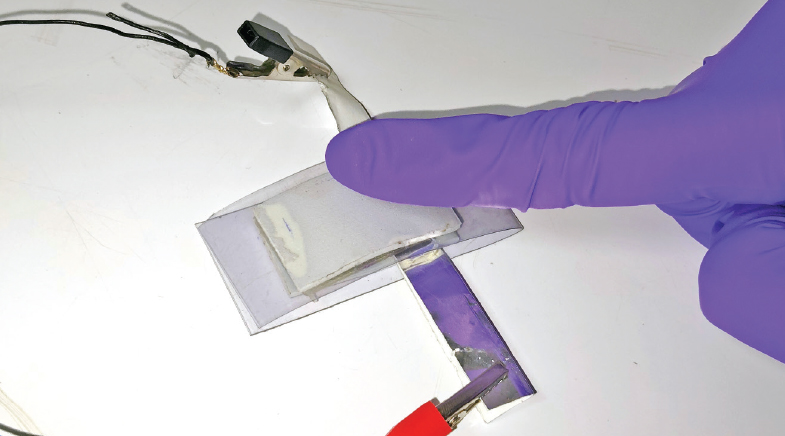Rajinder Kumar: He saw Beauty in Bubbles (1934 - 2022)
-
- from Shaastra :: vol 01 issue 02 :: Mar - Apr 2022

An extraordinary scientist, mentor and administrator, he built a school of chemical engineering based on mathematical modelling.
As Professor Rajinder Kumar used to say in his lectures, it all started with a bubble. Those hollow liquid spheres, which form when more gas is passed through a liquid than can dissolve, are a thing of beauty when they float in the air, their surfaces bouncing and splitting and coalescing the colours that make up white light. Rajinder Kumar saw in them a different beauty. He visualised the forces that form, move and break up bubbles in chemical reactors. His mind translated these forces into elegant mathematical equations that engineers used to design reactors.
In the early 1960s, when Kumar was doing his PhD, chemical engineering students learned about bubbles from experimental data that engineers had generated using reactors of various sizes. There wasn't at that time a good theory of bubbles - engineers called them models - although understanding them was key to building and scaling reactors. Within a few years of finishing his PhD, Kumar transformed engineers' understanding of drops and bubbles. It was the beginning of a long career, spanning nearly six decades, which ended with his death on February 7, 2022, after a brief illness.

Kumar was born in Bajwara village in Hoshiarpur district of Punjab. After his graduation from Panjab University in 1954, he became a teacher in his village. His family was facing hard times, and he could not continue his education. "School children used to make fun of him, calling him a one-pant teacher," recalled his wife B.K. Andal at a condolence meeting at the Indian Institute of Science. The village zamindar, learning of the intelligent young man's plight, stepped in and funded his expenses for a Master's degree in Delhi Polytechnic. Subsequently, he won a scholarship from the Punjab government to do his PhD in chemical engineering at IISc.
Kumar finished his PhD in 1965 on electrolytic production of heavy water. He must have been thinking about the behaviour of bubbles while working on his PhD, watching them rise and break in his experiment chambers. Experimental facilities in IISc were poor at that time. Chemical engineering itself was a nascent subject in India, and university departments were quite small. India's chemical industry had been growing rapidly since independence, but chemical companies' business was not based on deep research, and they did not employ enough researchers either.
In an article he wrote barely months before he died, Rajinder Kumar rued the incapacity of Indian science to attain world leadership.
MATHS MODELS
Chemical engineering was an empirical subject in the 1960s, but it was on the verge of a big change. Research groups in some U.S. universities - Minnesota, Wisconsin, Delaware - were bringing in mathematics and science in a big way to a subject that was largely based on experimental data. Engineers would conduct many experiments, changing the size of the reactors, the nozzle size, the velocity of the gas, and so on, hoping that their learnings would let them design different kinds of reactors. They didn't - at least not without unanticipated problems.
Beginning from the 1960s, science and mathematics helped engineers look deeply at the fluid mechanics inside the reactor. At the University of Cambridge, John Davidson and his colleagues were using mathematics to understand how bubbles form and grow in the reactors. The reaction of two immiscible liquids is controlled by the droplet size, and the reaction by a liquid and a gas in controlled by bubbles. And yet no one had a model about how bubbles and droplets form, and therefore no one could predict what would happen in a given situation.

When Kumar started work on bubbles, there was one model, developed by Davidson and his colleagues, that yielded good predictions but not at high velocities of the gas. Kumar gave the answer by describing how forces on the bubble balanced in a reactor. Later, his model became applicable to other kinds of reactors like spargers. "Kumar's model predicted experimental data far better than anything that existed at that time," says his student Sanjeev Kumar, who is now the Chairman of the chemical engineering department at IISc.
With his work on bubbles, Kumar had shown an ability to come to the heart of things very quickly. "He knew what was important," says Doraiswami Ramkrishna, his former collaborator and distinguished professor at Purdue University. "He could take a complicated problem and strip it to a point where you could take a simple view and get answers." This ability to spot the important within a morass of detail became the distinguishing feature of all his work subsequently. Modern methods of computation, which make it possible to consider more details than the earlier generation of engineers could, have shown that Kumar's intuitive approach was largely correct.
Kumar could take a complicated problem and strip it to a point where you could take a simple view and get answers, recalls his former collaborator.
His ability to simplify showed up in his work on foams and, later, on nanoparticles. Foams are formed when bubbles adhere together. The junctions of these bubbles are curved, and therefore difficult to model mathematically; yet, it is necessary to do so to understand how the liquid drains through the borders, among other things. In one of his famous papers in Chemical Engineering Science, authored with his student Dilip Desai, Kumar showed how to simplify the calculations by assuming that the border cross-section is a triangle and not curved. "I ran with the idea and developed the mathematics," says Desai, who later became a professor at Monash University in Australia.
In 1982, Kumar was joined in his department by K.S. Gandhi, till then an assistant professor at IIT Kanpur. They became inseparable colleagues and friends, becoming jointly involved in many activities of the department. Having modelled bubbles and drops, Kumar began to teach a course on mathematical modelling. It was a bold step. "Kumar never went abroad to train himself in research," says V. Shankar, professor of chemical engineering at IIT Kanpur, who finished his PhD from IISc in the year 2000. "To build a school of chemical engineering based on mathematical modelling and understanding was a singular achievement."

Kumar retired from the department in 1995. By then, he had had a substantial influence on the course of Indian science through mentoring and membership in various committees, where he brought his unique style of forcing a logical and uncontestable point of view without running down anyone. "He was willing to listen and he made critical comments without being verbose," says M.M. Sharma, former director of the Institute of Chemical Technology, Mumbai. "He was also liked by all. This is most unusual in the academic community." Even with outstanding scientists, they would temper every word of praise with a critical comment. With Kumar, they never added a but...
Kumar had an outsized influence on the Council of Scientific & Industrial Research (CSIR). He persuaded R.A. Mashelkar to accept an offer as CSIR Director-General in 1995. When Mashelkar moved to the headquarters, he created a New Idea Fund and made Kumar the Chairman of the committee to select the proposals. "Kumar had the ability to insist on excellence without making someone feel bad," says Mashelkar. "And for the first time, CSIR scientists started thinking that it did not matter if you fail," says Mashelkar.

THE BIG PICTURE
Kumar thought about the nature of research in the larger context and kept himself busy writing even in the final stages of his life. A few months before he died, he wrote and circulated among friends an article titled "Is doing good science good enough?" In it, he rued the incapacity of Indian science to attain world leadership, and blamed it on the scientific system not demanding excellence.
Kumar had suffered from arthritis for years, and walked with the help of a stick. Later in his life, he was often seen with one walking stick in each hand. He was in pain most of the time, but he never showed it. Perhaps the beauty he saw in bubbles was therapeutic enough.
Have a
story idea?
Tell us.
Do you have a recent research paper or an idea for a science/technology-themed article that you'd like to tell us about?
GET IN TOUCH














